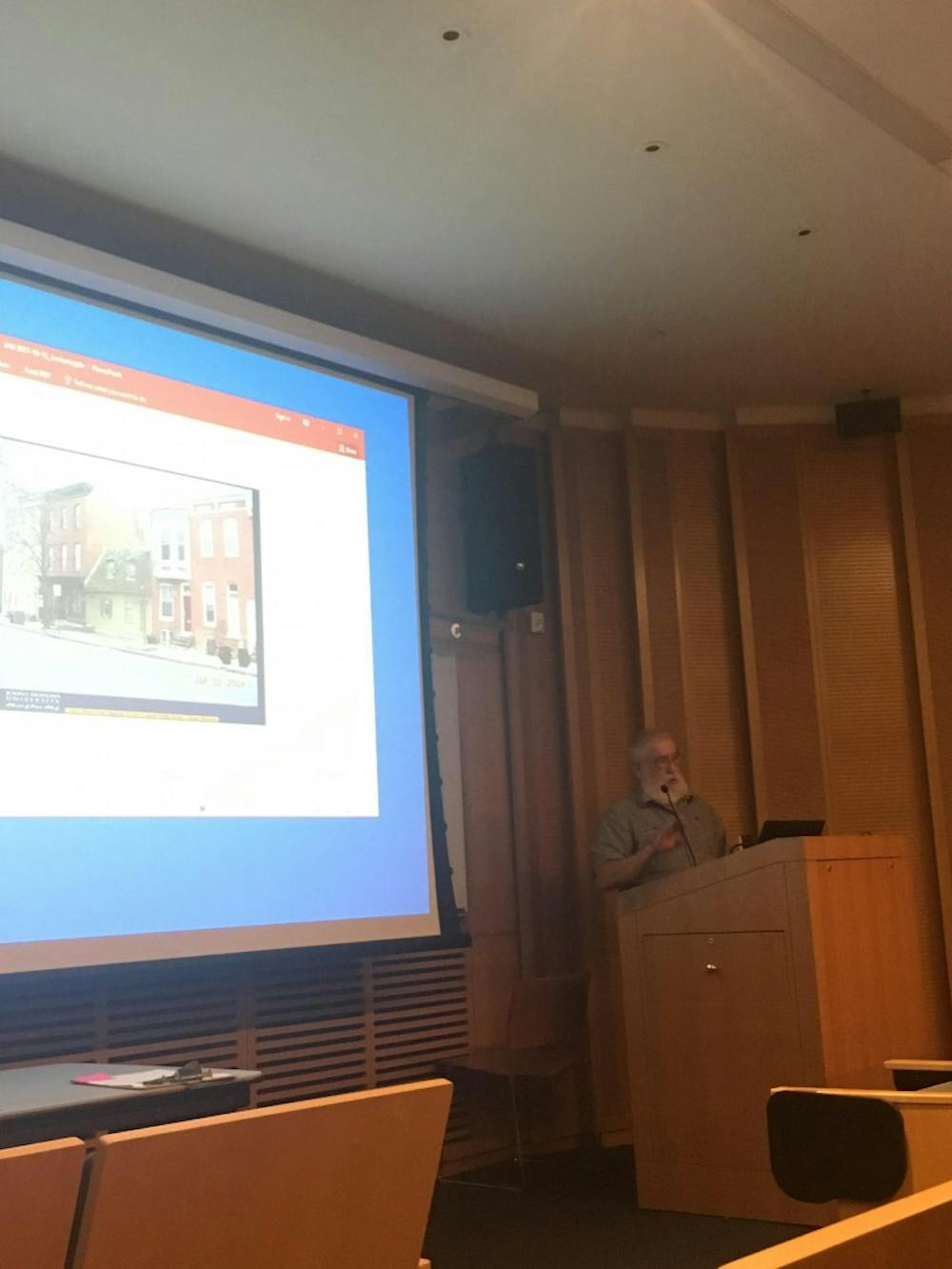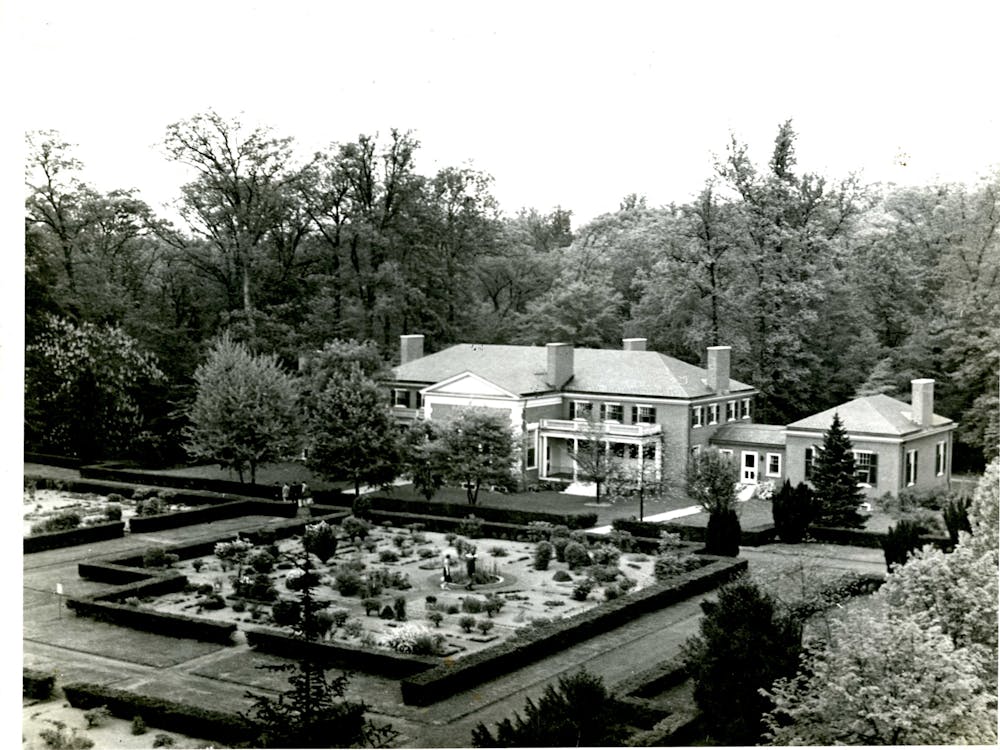The Homewood Museum kicked off its Architectural Lecture Series with a talk by Bryan Blundell, the president of Dell Corporation, an architecture preservation firm, on Monday. This year’s theme for the series is African American Dwellings in the Antebellum Period.
Blundell spoke about the historic Caulkers’ Houses, located in the Fells Point neighborhood of Baltimore. Commonly referred to as the “Two Sisters Houses,” these homes were built in 1797 and housed ship caulkers throughout the 1800s. Some believe that Frederick Douglass frequented these homes, since he lived in Fells Point and was a ship caulker.
Blundell said that when conducting research on restoration projects, it is important to maintain an open-minded approach, because each visit yields new information.
“We have to think about the people who lived in the house and how the house can tell us that story,” he said.
Although the houses are mostly in ruins now, Blundell and his team were able to guess that the two homes were once connected and were adjacent to a second set of houses; there were a total of four houses side by side.
They arrived at this conclusion by using measurements from an old zoning map of the city, as well as deductive reasoning. After finding the inner framework of a window in the houses’ plaster, Blundell’s team inferred that there was once a small alley between the two sets of houses.
Blundell described how with the development of a horse-drawn trolley line a few blocks from these houses in the 1850s, the area experienced gentrification.
“The property value went up, so people started to fix up their houses,” he said.
During this time, the style of homes changed. Houses were originally made to look like Tudor-style homes from medieval England. During the mid 1800s, however, new layers of paint and brickwork were placed on top of the foundation.
Blundell said that before this work was done, all the houses in Fells Point were of a similar old-fashioned Tudor design.
“Imagine walking down the street and seeing the dirt road and the whole street lined with these [Tudor style houses],” he said. “Are you in Fells Point or medieval England?”
Although the exteriors may look different, some of the original woodwork remains. Another component left intact from the remnants of these houses are the ceiling tiles. The shingles on the Caulkers’ Houses are the original shingles from 1797.
When researchers removed the original shingles, they noticed that there are only two holes in the ceiling where each shingle was hammered in with two nails.
Blundell explained that researchers are using the original shingles to track down the sort of businesses that were prominent in the area and the people who owned these businesses.
“Could you imagine if we could find relatives of these people whose names we found?” he asked. “It turns the whole situation very personal.”
The Dell Corporation is also partnering with Direct Dimensions Inc., a company that specializes in laser scanning. This allows the team to get precise measurements of the houses as well as digital line drawings of the property within an eighth of an inch’s accuracy.
The Dell Corporation aims to elevate community involvement with this project by potentially opening it up to the public. The foundation hopes to reconstruct portions of the house for students and community members to come and interact with the historical property.
Blundell proposed taking the destroyed plaster and objects in the house that no longer were important to the research and to have students conduct experiments on them to see what each artifact was made of.
Marian Lipinski, a six-year member of the Homewood Museum, enjoyed attending the event.
“I come to these lectures every year,” Lipinski said. “I’m interested in architecture and old homes and archeology. It’s a personal thing and it’s very fascinating.”























Please note All comments are eligible for publication in The News-Letter.